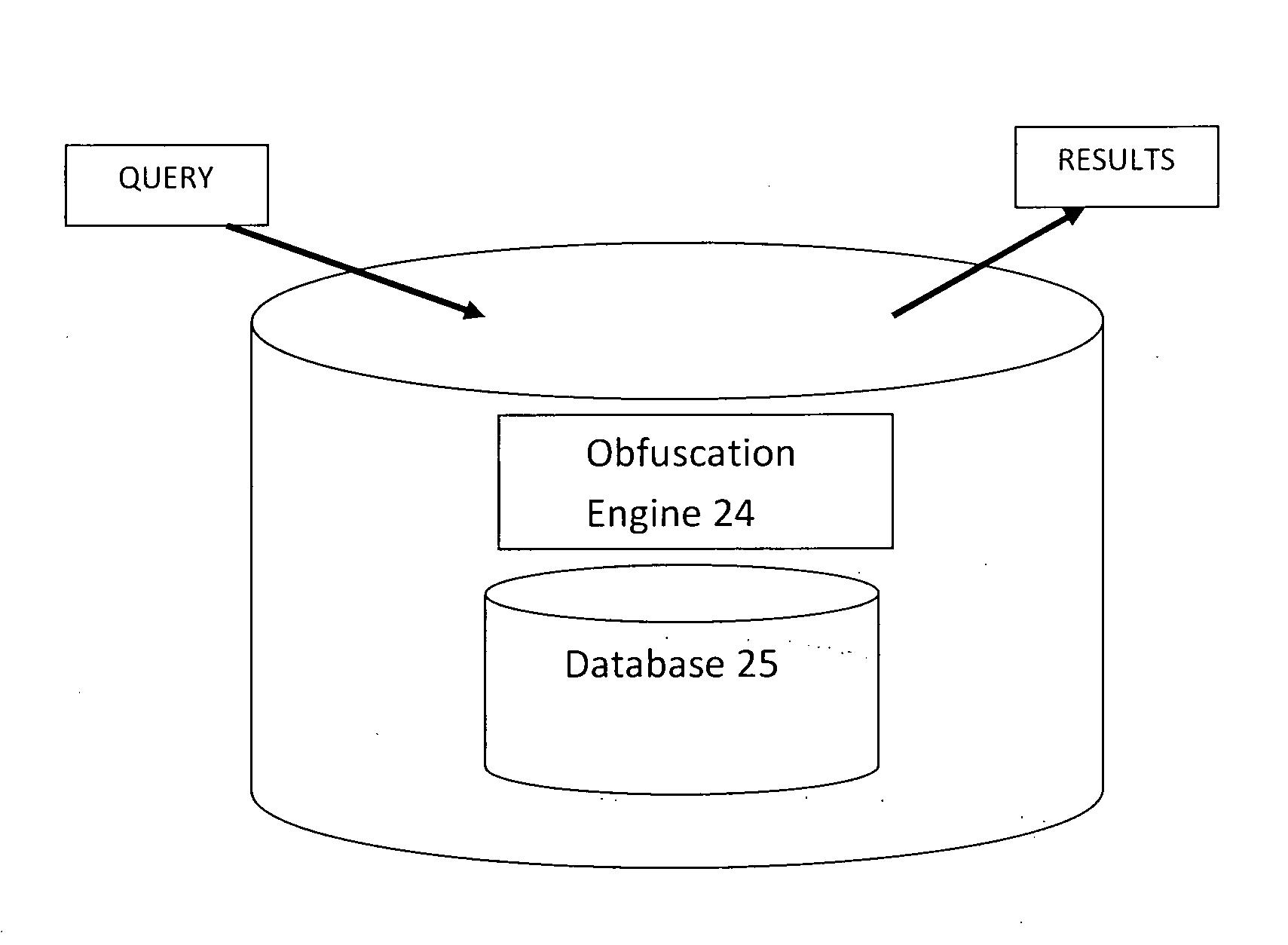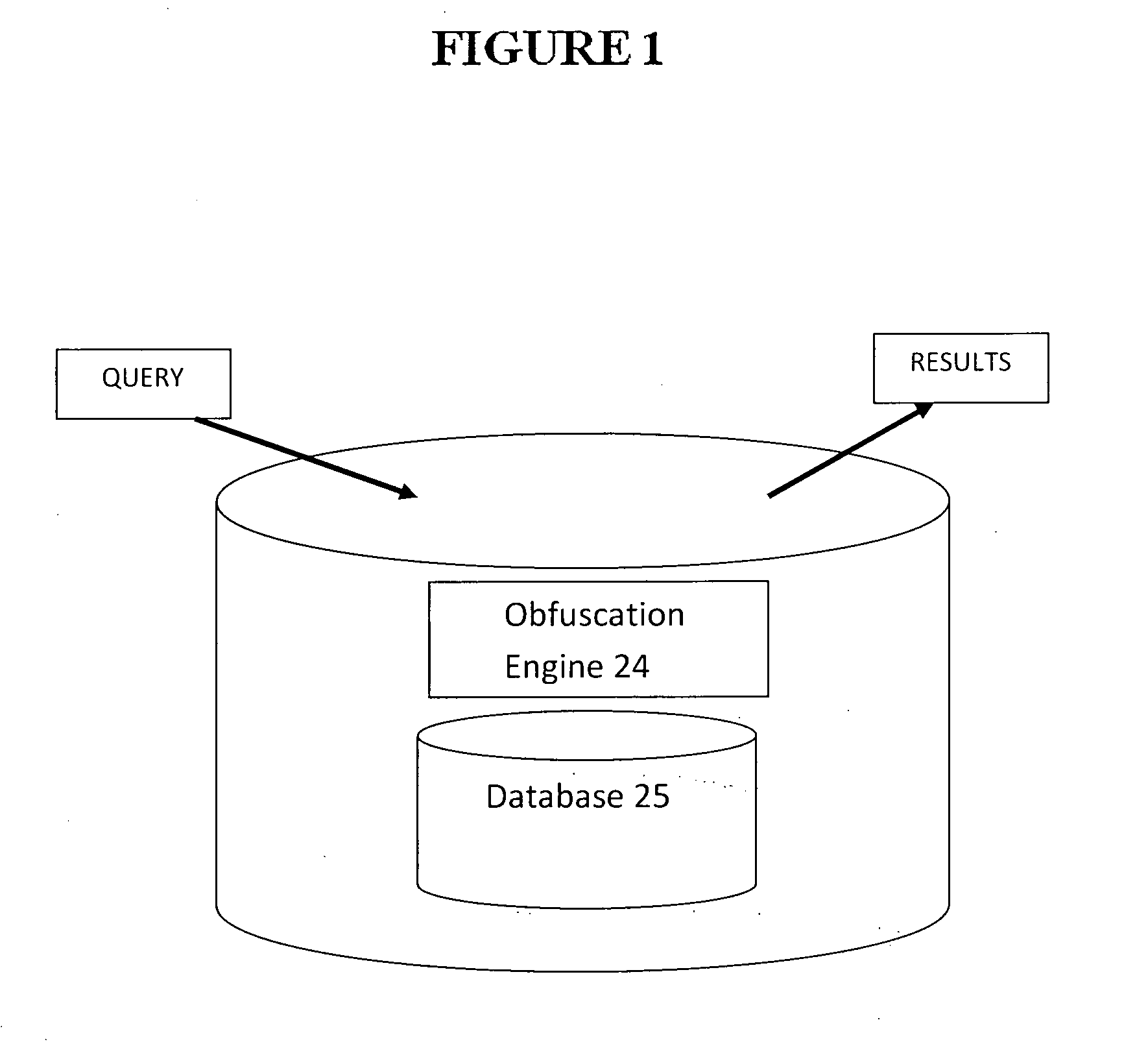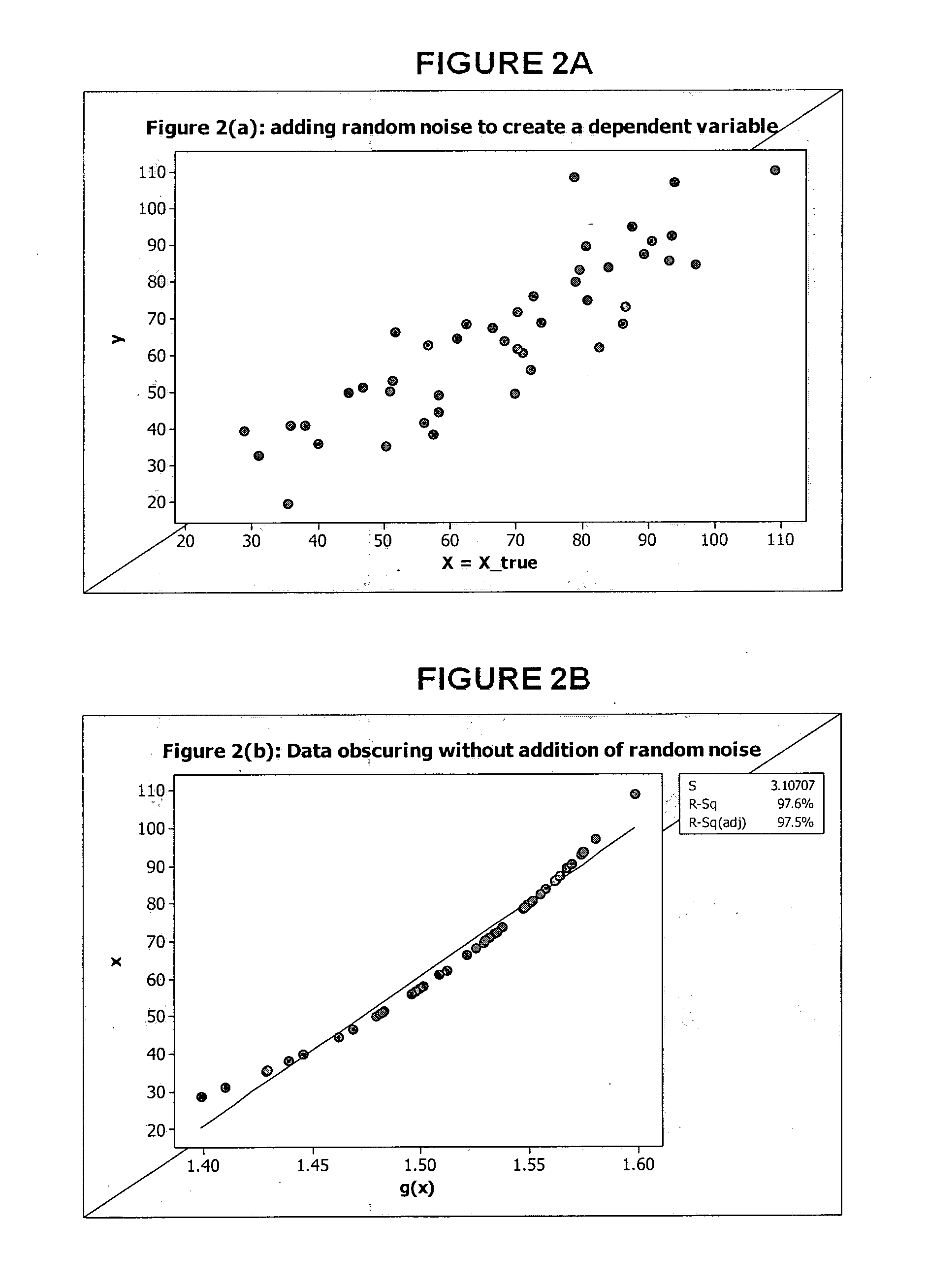Data obfuscation system, method, and computer implementation of data obfuscation for secret databases
a data obfuscation and database technology, applied in the field of data obfuscation system, computer implementation of data obfuscation for secret databases, can solve the problems of inability to control the amount of obfuscation, poor resolution of obscured values, and inability to achieve computational efficiency
- Summary
- Abstract
- Description
- Claims
- Application Information
AI Technical Summary
Benefits of technology
Problems solved by technology
Method used
Image
Examples
first embodiment
for Obfuscating Data
[0098]In the first embodiment, the method uses xTRUE,i to denote the true value of a column (variable) in a database corresponding to the i-th record, i=1, 2, . . . N, where N is the total number of records in the database. The method of weighted regression for data obfuscation can of course be applied to all of the N records. In the method for base data obfuscating in this embodiment, however, a representative subset of xTRUE,i values are selected and then a random error with variance proportional to the magnitude of xTRUE,i value is added to each of the values in the selected subset to obtain n pairs of data points (xi, yi) where xi=xTRUE,i and yi=xi+ei, i=1, 2, . . . n. The random errors ei can be generated by first generating ei from a normal population with mean 0 and common standard deviation σ, and then multiplying ei by √{square root over (xi)}. Since the errors thus generated have variance proportional to xi, the weighted least squares regression method ...
example 1
Linear Regression Based Obfuscating of Value Data
[0111]The data for this example was generated from the mixture normal distribution
f(x)=0.5f1(x)+0.25f2(x)+0.1f3(x)+0.1f4(x)+0.05f5(x)
[0112]where f1(x) is normal with mean 5 and sd 1[0113]f2(x) is normal with mean 50 and sd 5[0114]f3(x) is normal with mean 1000 and sd 10[0115]f4(x) is normal with mean 10000 and sd 100
[0116]and f5(x) is normal with mean 100000 and sd 100.
[0117]A total of N=10000 data points were generated; this set of 10000 records is our database {xTRUE,i, i=1, 2, . . . , 10000}. A histogram of this synthetic data is shown in FIG. 4. The 20-point summary of this set was then calculated. The errors ei, i=1, 2, . . . , 20 were generated from the normal distribution with mean 0 and sd σ=0.5, and then yi is calculated as follows:
yi=xi+ei,i=1,2, . . . ,20
[0118]A straight line is then fitted to the (xi, yi) data where xi=xTRUE,i, by using the method of weighted least squares, with weights inversely proportional to the varian...
second embodiment
for Obfuscating Data
[0127]In this embodiment, the method and system to obscure data uses a univariate statistical method for obfuscating data in one column of the database, without randomly perturbing the data.[0128](1) Calculate Xi=g(XTRUE,i), where g(X) is some non-linear function of X.[0129](2) Set the dependent variable as Yi=XTRUE,i and the predictor as Xi=g(XTRUE,i) and the straight line Yi=a+bXi+ei to the (Xi, Yi) data.
[0130]This fitted line is used as the output of an SQL query.
PUM
 Login to View More
Login to View More Abstract
Description
Claims
Application Information
 Login to View More
Login to View More - R&D
- Intellectual Property
- Life Sciences
- Materials
- Tech Scout
- Unparalleled Data Quality
- Higher Quality Content
- 60% Fewer Hallucinations
Browse by: Latest US Patents, China's latest patents, Technical Efficacy Thesaurus, Application Domain, Technology Topic, Popular Technical Reports.
© 2025 PatSnap. All rights reserved.Legal|Privacy policy|Modern Slavery Act Transparency Statement|Sitemap|About US| Contact US: help@patsnap.com



